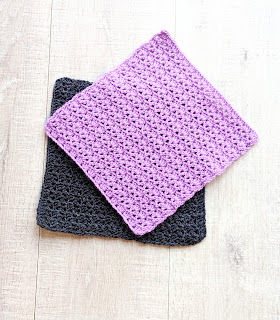Crochet Ribbing: Add Stretch, Texture, and Style to Your Projects
If you’ve ever admired the stretchy cuffs on crochet sweaters, the neat edges on hats, or the snug fit of a headband, you’ve already seen crochet ribbing in action. Ribbing adds elasticity, structure, and a beautiful texture that elevates even the simplest crochet designs. Let’s explore what crochet ribbing is, the different types, and how to choose the best one for your project.
What Is Crochet Ribbing?
Crochet ribbing mimics the look and stretch of knitted ribbing. It’s created by working stitches in a way that forms raised ridges and recessed grooves—usually by using front and back post stitches or working in the back loops only (BLO). The result is a flexible, stretchy fabric perfect for trims, cuffs, waistbands, and decorative accents.
Types of Crochet Ribbing
1. Back Loop Only (BLO) Ribbing
This is the most common and beginner-friendly type. You simply crochet through the back loop of each stitch, creating horizontal ridges that resemble knitted ribs.
Best for:
-
Hat brims
-
Sweater cuffs and hems
-
Neckbands and headbands
Why: It’s stretchy, simple, and works beautifully with single crochet or half double crochet stitches.
2. Front Post and Back Post Ribbing
This type uses front post double crochet (FPdc) and back post double crochet (BPdc) stitches to create vertical ribs. It’s thicker and more structured than BLO ribbing.
Best for:
-
Beanies and hat brims
-
Sweater edges and collars
-
Chunky scarves and cowls
Why: The vertical ribs give a rich, knitted appearance and hold their shape well, making it ideal for heavier projects.
3. Slip Stitch Ribbing
Slip stitch ribbing creates a dense, stretchy fabric that closely resembles knit ribbing. It’s worked in the back loop of slip stitches, row by row.
Best for:
-
Fitted cuffs and mittens
-
Waistbands on skirts or pants
-
Socks and gloves
Why: It’s incredibly elastic and forms a neat, fine texture, though it takes more time to make.
4. Half Double Crochet Back Loop Ribbing
A slightly looser alternative to single crochet ribbing, this one is worked in the back loops of half double crochet stitches.
Best for:
-
Sweater trims
-
Cozy blankets or throws
-
Decorative borders
Why: It gives a soft drape while still maintaining a hint of stretch—perfect for edges that don’t need tight elasticity.
Tips for Perfect Crochet Ribbing
-
Use a smaller hook size for ribbing than for the main body of your project to keep it snug.
-
Always chain one and turn at the end of each row (unless your pattern says otherwise).
-
For ribbing attached to a project, you can crochet it directly onto your piece or make it separately and sew it on later.
Final Thoughts
Crochet ribbing adds not just function but flair. Whether you want stretchy cuffs, stylish textures, or snug edges, there’s a ribbing technique that fits your project perfectly. Experiment with different stitches, yarns, and textures—you’ll be amazed at how much character a simple ribbed edge can bring to your crochet creations.



Comments
Post a Comment